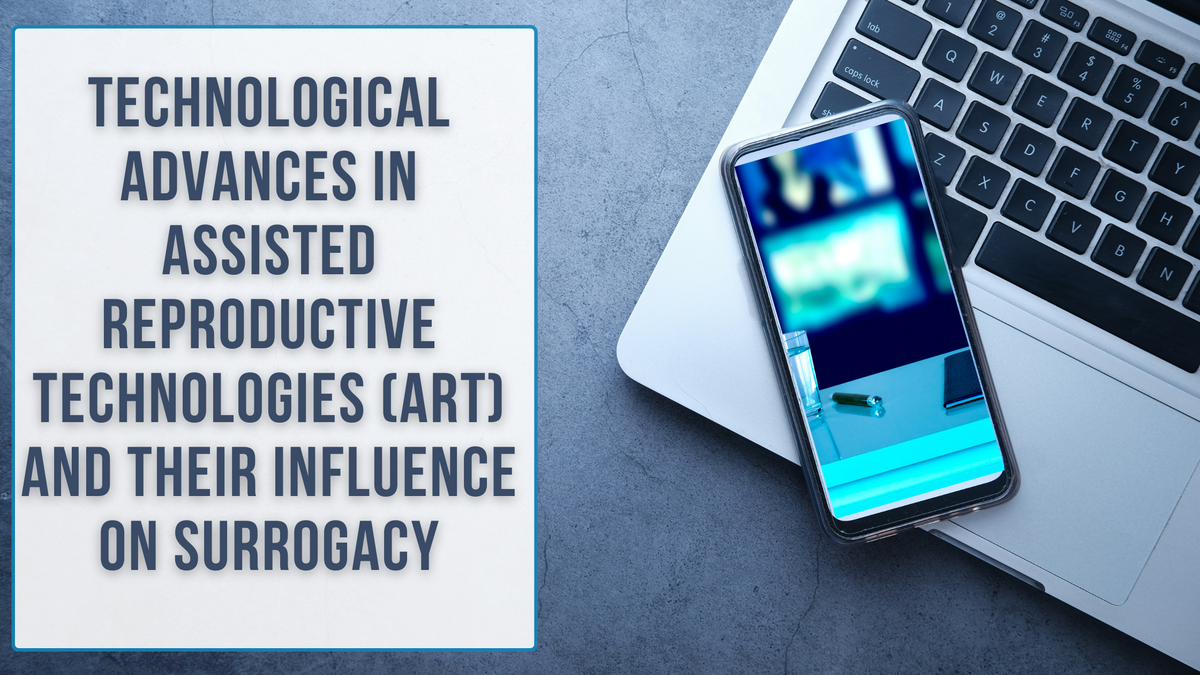Advancements in Assisted Reproductive Technologies (ART) have significantly influenced the surrogacy landscape, offering new possibilities and improving outcomes for intended parents and surrogates alike. In this article, we explore some of the most impactful technological innovations shaping the future of surrogacy.
TAKE THE SURROGACY QUIZ >>>>> CHAT WITH A SURROGATE
Time-Lapse Embryo Imaging and Artificial Intelligence (AI)
Traditional embryo assessment relies on periodic observations, which may miss critical developmental events. Time-lapse embryo imaging systems, approved for clinical use since 2009, continuously monitor embryos, providing comprehensive data on their development. This technology enables embryologists to select embryos with the highest implantation potential, potentially improving pregnancy rates. However, studies have shown that when comparing time-lapse embryo imaging devices to conventional embryo assessment methods, there is insufficient evidence of a significant difference in live birth rates, pregnancy outcomes, stillbirths, or miscarriages.
Building upon time-lapse imaging, AI and deep learning algorithms are being developed to enhance embryo selection further. For instance, the Embryo Ranking Intelligent Classification Algorithm (ERICA) aims to predict an embryo’s genetic status non-invasively, potentially increasing the accuracy of selecting viable embryos. While feasibility studies support its potential, more research is needed to validate its effectiveness.
Extended Embryo Culture to Blastocyst Stage
Culturing embryos to the blastocyst stage (day five or six post-fertilization) allows for better selection of viable embryos, as they have undergone critical developmental milestones. This approach has been associated with higher live birth rates per embryo transfer. However, it may result in fewer embryos available for transfer or cryopreservation, and some studies have noted an increased risk of preterm birth and congenital anomalies compared to cleavage-stage transfers.
TAKE THE SURROGACY QUIZ >>>>> CHAT WITH A SURROGATE
Preimplantation Genetic Testing (PGT)
PGT involves analyzing embryos for genetic abnormalities before transfer, reducing the risk of inherited genetic disorders and increasing the chances of a successful pregnancy. However, a systematic review and meta-analysis of existing randomized controlled trials found no evidence of a beneficial effect of preimplantation genetic screening (PGS) with cleavage-stage biopsy on live birth rates. For patients of advanced maternal age, PGS with cleavage-stage biopsy significantly lowered the live birth rate. Technical drawbacks, such as the invasiveness of the biopsy and non-representative samples due to mosaicism, are major factors contributing to the inefficacy of PGS.
Cryopreservation Techniques
Advances in cryopreservation, particularly vitrification (rapid freezing), have improved the survival rates of frozen oocytes and embryos. This advancement offers greater flexibility in surrogacy arrangements, allowing for the synchronization of cycles between surrogates and intended parents and the preservation of embryos for future use. The outcome from using cryopreserved embryos has been positive, with no increase in birth defects or developmental abnormalities.
Intracytoplasmic Sperm Injection (ICSI)
ICSI involves the direct injection of a single sperm into an egg, overcoming certain male infertility issues. Its application in surrogacy ensures that intended parents with male factor infertility can have genetically related children. ICSI can be used in cases of teratozoospermia (abnormal sperm morphology), as once the egg is fertilized, abnormal sperm morphology does not appear to influence blastocyst development or morphology.
Cytoplasmic Transfer
Cytoplasmic transfer involves injecting cytoplasm from a donor egg into an egg with compromised mitochondria. The resulting egg is then fertilized and introduced into a uterus, usually that of the person who provided the recipient egg and nuclear DNA. This technique aids individuals experiencing infertility due to deficient or damaged mitochondria, potentially enhancing embryo viability and pregnancy success rates.
TAKE THE SURROGACY QUIZ >>>>> CHAT WITH A SURROGATE
Implications for Surrogacy
These technological advancements collectively enhance the efficiency and success rates of surrogacy arrangements. Improved embryo selection and genetic testing contribute to healthier pregnancies, while advanced cryopreservation techniques offer flexibility in timing and coordination between surrogates and intended parents. As these technologies continue to evolve, they hold the promise of making surrogacy more accessible and successful for those embarking on this path to parenthood.
Staying informed about these developments is crucial for intended parents and surrogates to make well-informed decisions throughout their surrogacy journey.
Follow Surrogacy Mentor on Instagram , Facebook, YouTube and TikTok!

